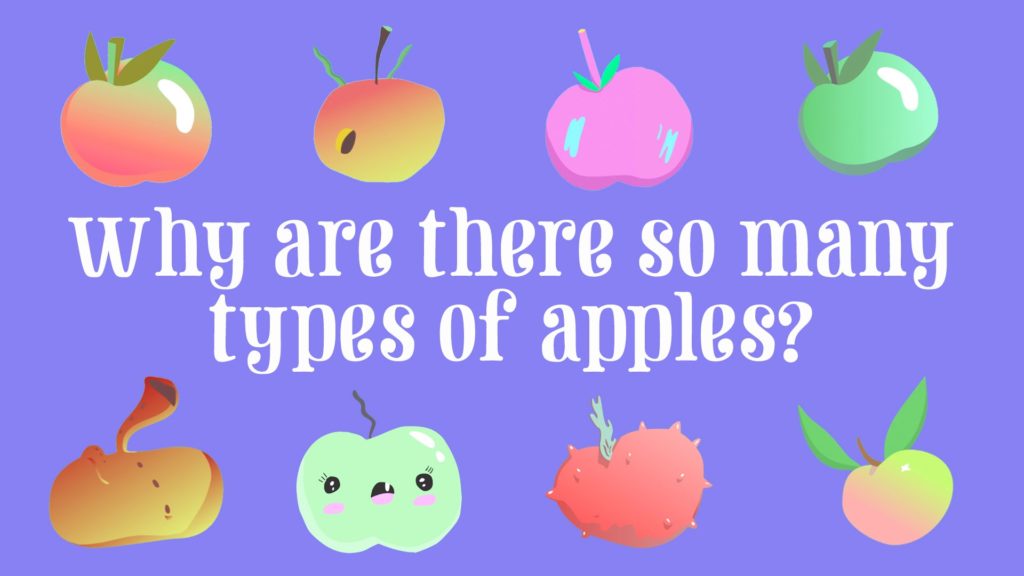Why are there so many types of apples?

There are more than 7500 varieties of apples. Different variety of apples is bred for various tastes, different range of desirable characteristics and to fulfill expectations of farmers and consumers who seek specific qualities in an apple, like farmers might want them to be disease-free and consumers might be more attracted to its appearance and taste.
How are different varieties of apples produced?
Cross-Pollination
Breeders have to breed new types of apples to fit the desired requirements. Through the process of cross-pollination, the breeder finds parent apples that carry desirable characteristics and then take pollen from one to another. Once it turns into an apple, the seeds are collected and then planted.
Duration
It takes five years for these seeds to grow into trees that produce apples. All these apples have different genes and characteristics compared to normal apples; it takes a lot of offspring to get the desired quality.
Evaluation
When a fruit with desired qualities is produced, it is selected for further evaluation. They are sent to new farms where breeders observe how various climate and soil types affect their growth.
Selection
The clones or seedlings must be sampled for consistency. Breeders study the traits of the apples and remove the bad apples, selecting only the best clone or seedling.
Grafting
Cultivar (the new apple variety) is formed from the selected best clone. To ensure its consistency, all apple trees must be grafted from the original seedling. Grafting is a technique that joins two plants into one. In this case, the best wood quality bearing plant is grafted with the best root quality bearing plant.
Fusion
Once the new apple tree grows with desired qualities from the fusion, it takes about four years to produce fruits that we eat. And that is how we ended up with more than 7500 varieties of apples.






Responses